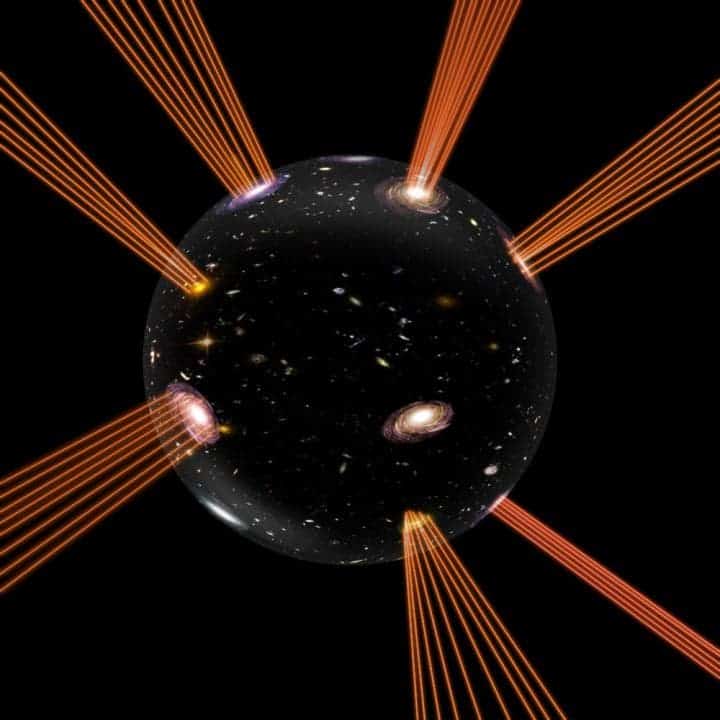The model can account for the mysterious dark energy and it makes a very bold claim: that our Universe is an expanding bubble in an extra dimension.

In their article, the scientists propose a new model with dark energy and our Universe riding on an expanding bubble in an extra dimension. The whole Universe is accommodated on the edge of this expanding bubble. Image credits: Suvendu Giri.
When astronomers realized that the universe is expanding — and furthermore, that it is expanding at an accelerating rate — a lot of puzzling questions struck astronomers. Still, this was only the tip of the cosmological iceberg, and things got even weirder when observations of dark energy started clumping up.
As the name implies, dark energy is a mysterious form of energy which is hypothesized to permeate all of space, tending to accelerate the expansion of the universe. Basically, it’s a form of energy thought to be responsible for this accelerated expansion of the universe. But exactly what it is and why it behaves the way it does is unclear. When you add in that dark energy contributes 68% of the total energy in the present observable universe, the mystery becomes all the more pressing.
For a while, it was thought that string theory could provide the much-sought answer. In string theory, point-like objects of particle physics are replaced by elongated (one-dimensional) objects called strings. String theory has been applied to a variety of problems in theoretical physics but in recent years, string theory models have come under increasing criticism, and many physicists are doubting them more and more.
Now, in a new study, researchers propose another, equally wild, possibility. They propose a new model in which the universe is “riding” an expanding bubble in an extra dimension. Essentially, the entire universe, everything we can observe, is at the edge of that bubble.
Think of it this way: let’s say you take a balloon and mark a dot on it. Then, with a different color, you make another dot, and another one. After a while, you have a bunch of dots on the balloon’s surface. As you blow air into it, the balloon’s surface expands, and the dots move farther away from each other. In this analogy, the dots are galaxies — as the universe expands, it pushes everything away from everything else. This is very appealing because it would help explain not only why things are expanding at an accelerating rate — but why they are expanding uniformly. Essentially, all galaxies are moving away from each other at the same time, which intuitively, seems extremely weird — generally, as something moves away from one thing, it moves closer to another thing. So then how could everything move away from everything else?
This new model can also fit in with string theory and would help explain how matter and dark energy fit in together. But there’s another startling consequence to this model: if our universe, everything we know as real in 4D (the three spatial dimensions plus time), is only the membrane of this expanding bubble, then the actual bubble must have one extra dimension. In other words, in addition to our universe, there must be another “parent” 5D universe — although the stability and viability of that universe are not exactly clear. Furthermore, there may very well be other bubbles, with other universes similar to ours on their outer edge.
This is a lot to swallow, but similar theories have been investigated before. This idea somewhat resembles the idea of a holographic universe, which has been partly validated by practical observations.
The theoretical framework for this theory appears to work, at least for now. The more researchers will try and poke it, the more its validity will be put to the test. However, even if the theory stands, there’s nothing to say that this actually is the case. Simply put — for now, this is a potentially plausible scenario. Whether or not this really is the case is a whole new different story.
The study, “Emergent de Sitter Cosmology from Decaying Anti–de Sitter Space” has been published in Physical Review Letters.









